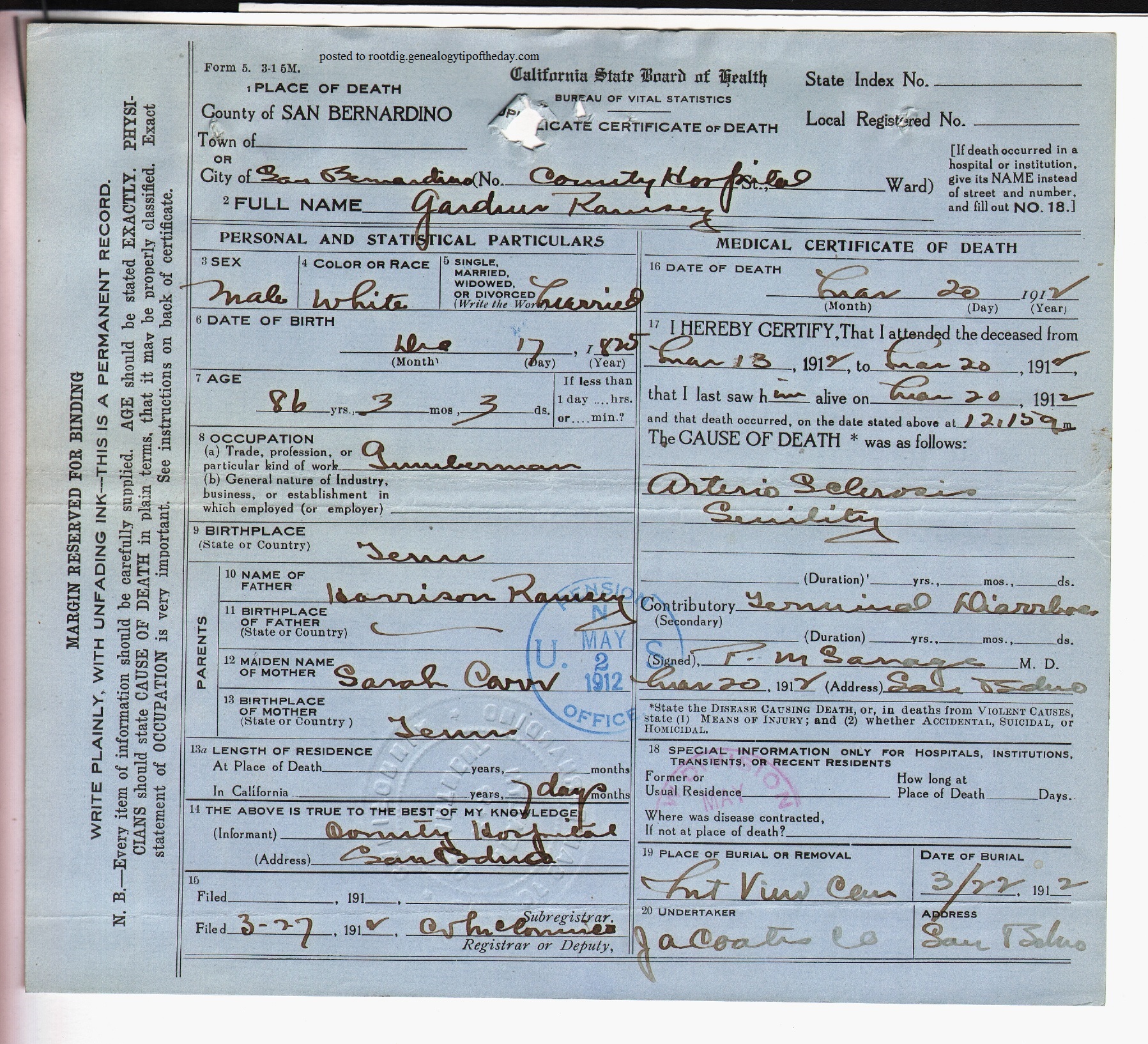It’s a derivative copy of a derivative copy of Gardner Ramsey’s death certificate.
Classification of sources as being either original or derivative sometimes seems like a pedantic activity that takes time away from more immediately gratifying activities. It may be correct to not even refer to “classification of sources” as being gratifying in any sense. But whether one enjoys it or not and whether one tracks the designation in their database, it’s still worth thinking about.
That’s the case with the 1912 “death certificate” of Gardner Ramsey from San Bernardino, California. The copy used in this illustration did not come from San Bernardino County. It did not come from the State of California. Instead it came from the Mexican War pension file for Gardner at the United States National Archives.
It was one of the few blue pieces of paper in his pension file. Given the unusual color of the item compared to the other papers in the file, I was tempted for a brief moment to think I was looking at an image of the real thing and that I had a digital image of his actual death certificate.
I didn’t.

Looking at the next image (the reverse side of the item) caused me to discover that I was looking at a certified copy of Gardner’s death certificate. The Registrar makes that clear in his statement written on the reverse side of the document.

It looks like the real thing because it was likely easier for the clerk to copy the information onto a blank death certificate form than to copy all the information by hand and complete an actual transcription of the entire record. A handwritten copy was the only reasonable option in 1912.
It appears that the registrar who made the copy is the same person who filled out the original. This increases the chance that he was able to read the handwriting on the original when making this transcription. Legibility of the original is always a concern when looking at a document that is a transcription of the original document–even if the legibility of the original is not mentioned in the transcription.
What was in the pension file was a certified copy of the actual death certificate of Gardner Ramsey. That makes it a derivative copy. That’s not bad–it’s just describing precisely what I have. Knowing what I have helps me to determine if there is something else that I need to obtain in order to view it. In this case I’m not certain that I will go to the expense of getting a copy of the original death certificate.
In my notes on this document, I will indicate that this image is of a certified copy of Gardner’s death certificate that appeared in his Mexican War pension file (and include his specific unit and other information that will allow someone else to access his pension record). I will not indicate it is a copy of his actual death certificate because it is not.
It is an image of a certified copy of his death certificate and that’s what I should call it.
A few reminders:
- probate files can be great places to get copies of death certificates
- always look at the front and back of everything
Kat says:
It even has a seal imprint, and no registration numbers since it was a copy.
mjnrootdig says:
That’s a good catch about the registration number not being on it.